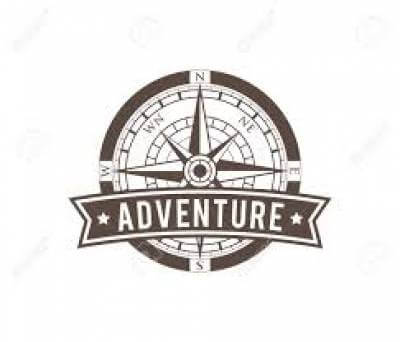9 DAYS ANNAPURNA BASE CAMP TREK
The 9 Days Annapurna Base Camp Trek is an excellent choice for trekkers who have limited time but want to experience the breathtaking beauty of the Annapurna region. This compact yet rewarding trek is designed to take you through some of Nepal’s most scenic landscapes, offering stunning mountain views and a deep dive into the rich local culture.
Your adventure begins in Kathmandu, the vibrant capital of Nepal, where you’ll prepare for your trek with a warm welcome and necessary briefings. From Kathmandu, a scenic flight takes you to Pokhara, the picturesque lakeside city and gateway to the Annapurna trekking region.
From Pokhara, you’ll drive to the trailhead at Siwai and start your trek towards Upper Sinuwa, trekking through dense rhododendron forests, terraced rice fields, and traditional villages. Along the way, you will witness stunning panoramas of the Annapurna Himalayan range while experiencing authentic Gurung and Magar culture.
Continuing the trek, you will reach Deurali, where you’ll spend the night surrounded by majestic mountain peaks. The highlight of the journey is arriving at the Annapurna Base Camp (ABC), located at 4,130 meters (13,550 feet). Here, you will enjoy panoramic views of famous peaks like Annapurna I (8,091m), Annapurna South (7,219m), and Machapuchare (Fishtail Mountain). The serene atmosphere of the base camp is a perfect reward for your efforts.
The return trek passes through Sinuwa and continues down to Jhinu Danda, where you can unwind in natural hot springs — a perfect way to relax tired muscles. From there, the trek ends with a drive back to Nayapul and then a transfer to Pokhara. Finally, you take a short flight back to Kathmandu, concluding your memorable Annapurna Base Camp Trek 9 Days journey.
This trek is ideal for adventurers seeking a high-altitude Himalayan experience within a short timeframe, combining spectacular mountain scenery, cultural immersion, and natural relaxation spots.
ITINERARY
Day 1 : Arrival in Kathmandu and Transfer to Hotel.
Arrive in Kathmandu, where you will be greeted by a representative and transferred to your hotel. After checking in, take some time to relax and explore the city at your leisure. You may visit popular spots like Durbar Square or Thamel. In the evening, you will receive a briefing about the upcoming trek.
Day 2 : Fly to Pokhara, Drive to Nayapul (1,050m), and Trek to Ghandruk (1,940m) Duration: 5-6 hours.
After breakfast, take a scenic 25-30 minute flight from Kathmandu to Pokhara, a picturesque lakeside city. From Pokhara, drive for approximately 1.5-2 hours to Nayapul, the starting point of the trek. Begin your trek toward Ghandruk, a beautiful Gurung village located at 1,940m. The journey will take around 5-6 hours, passing through terraced fields and lush forests. You will be rewarded with stunning views of the Annapurna and Machapuchare mountains. Overnight at Ghandruk.
Day 3 : Trek to Chhomrong (2,170m) Duration: 5-6 hours.
Today, the trek continues towards Chhomrong, a village located at 2,170m. The trail takes you through rhododendron forests and offers glimpses of Annapurna South and Machapuchare (Fishtail Mountain). The trek will take approximately 5-6 hours, and you will experience a change in the scenery as you ascend higher. Chhomrong offers a great view of the surrounding peaks and is a great place to rest for the night.
Day 4 : Trek to Himalaya (2,920m) Duration: 5-6 hours.
On Day 4, you will trek from Chhomrong to Himalaya, a journey of around 5-6 hours. The trail climbs gradually through dense forests and along steep paths, with occasional views of Machapuchare. As you approach Himalaya, the terrain becomes more alpine, with smaller villages scattered along the way. Himalaya is a small settlement offering stunning views and serves as an ideal resting place.
Day 5 : Trek to Annapurna Base Camp (4,130m) via Machhapuchhre Base Camp (3,720m) Duration: 5-6 hours.
This is the highlight of the trek! You will leave Himalaya early in the morning and begin the ascent towards Annapurna Base Camp. On the way, stop at Machhapuchhre Base Camp (3,720m) for a quick break and panoramic views of the surrounding mountains. Continue your journey to Annapurna Base Camp, where you will be surrounded by breathtaking views of Annapurna I, Annapurna South, Machapuchare, and other peaks. The trek from Himalaya to ABC takes around 5-6 hours, and the altitude here offers a rewarding sense of accomplishment.
Day 6 : Trek to Bamboo (2,350m) Duration: 5-6 hours.
After spending time at Annapurna Base Camp, start your descent back down the trail. The trek from ABC to Bamboo takes about 5-6 hours. The route retraces your steps through the alpine terrain, but now you’ll experience the changing landscape as you descend into the lower altitudes. Bamboo is a tranquil village surrounded by bamboo forests, providing a peaceful environment for an overnight stay.
Day 7 : Trek to Jhinu Danda (1,780m) Duration: 5-6 hours.
On Day 7, trek from Bamboo to Jhinu Danda, a journey that will take approximately 5-6 hours. As you descend, you’ll pass through forests and terraced fields, with occasional views of the surrounding mountains. Jhinu Danda is famous for its natural hot springs, where you can relax and soak your tired muscles after several days of trekking.
Day 8 : Trek to Nayapul and Drive to Pokhara (850m), Fly to Kathmandu Duration: 6-7 hours.
On the final day of your trek, you will trek from Jhinu Danda to Nayapul, which takes about 4-5 hours. From Nayapul, drive back to Pokhara, where you can relax or explore the city. After some free time, take a short flight back to Kathmandu. On arrival, you’ll be transferred to your hotel for the night.
Day 9 : Transfer to the International Airport for Final Departure.
On the final day, depending on your flight time, you may have some free time to do some last-minute shopping or sightseeing in Kathmandu. You will be transferred to Tribhuvan International Airport for your departure, marking the end of your unforgettable Annapurna Base Camp trek.
SERVICES
Cost Included in Your Package
- International & Domestic Airport Transfers: Convenient pick-up and drop-off services by car for both international and domestic airports.
- Meals During the Trek: Enjoy three daily meals—breakfast, lunch, and dinner—during your trek in the mountains.
- Accommodation in Kathmandu: Two nights of standard accommodation at a 3-star hotel in Kathmandu, on a twin-sharing basis, including breakfast.
- Experienced Trekking Guide: An English-speaking, government-registered trekking guide with extensive knowledge and experience.
- Sherpa Porters: Strong and supportive Sherpa porters equipped with proper safety and walking gear. Includes their salary, food, accommodation, and insurance (one porter per two trekkers).
- Flights: Return flights between Pokhara and Kathmandu.
- Local Transportation: Transportation by car or jeep from Pokhara to Nayapul back to Pokhara.
- Porter and Guide Expenses: All food, accommodation, insurance, and transportation costs for the porter and guide.
- Permits: Annapurna Conservation Area Permit and TIMS (Trekking Information Management System) card.
- Gear Rental: Use of sleeping bag, down jacket, duffel bag, and walking poles (if needed), to be returned after the trip.
- Trekking Lodge (Tea House) Stays: Comfortable lodging throughout your trek. Accommodation Notice During busy trekking times (mid-March to the end of May and mid-September to the end of November), teahouses in places like the Himalayas, Deurali, MBC, Annapurna Base Camp, and Bamboo usually have shared rooms with 4 to 5 beds. Private rooms are usually not available because many people visit at these times. Please be ready to share a room, as this is normal in these popular trekking areas.
- Assistant Guide: An additional assistant guide for groups larger than 8 people.
- Fresh Fruits: Seasonal fresh fruits are provided daily.
- Completion Certificate: An appreciation certificate awarded after a successful trek.
- Sherpa Teams T-shirt: A complimentary Sherpa Teams company T-shirt.
- Emergency Assistance: Support for arranging emergency rescue operations in complex health conditions (funded by travel insurance).
- Oximeter to check your pulse and oxygen saturation and heart rate twice daily (Very useful to check Altitude Mountain Sickness(AMS) symptoms) Which will ensure you trek is in the safest hands possible for all levels of trekker.
Costs Excluded
- Meals in Kathmandu & Pokhara: Lunch and dinner in Kathmandu and Pokhara.
- Nepal Entry Visa Fee: Visa on arrival at Tribhuvan International Airport costs $30 USD for 15 days, $50 USD for 30 days, and $125 USD for 90 days.
- Travel and Medical Insurance: Personal travel and medical insurance.
- International Airfare: Flights to and from Nepal.
- Personal Expenses: Any personal expenditures, including shopping and souvenirs.
- Beverages and Extra Food: Costs for alcoholic and non-alcoholic drinks, soups, tea, coffee, hot chocolate, cocoa, mineral water, and any additional food or drinks purchased along the trek or in tea houses.
- Desserts and Sweets: All desserts and sweet items such as chocolate, cake, pie, and pudding.
- Hot Showers and Battery Charging: Charges for hot showers and battery charging at tea houses.
- Tips: Tips for your guide, porter, and driver.
EQUIPMENTS
The following information will give you some idea about what you need to bring for the trek. It is important you do not forget the essential items, as this will determine your comfort and safety on the trek. Equally important is that you do not burden yourself with unnecessary equipment on the trek.
General
- All season sleeping bag and down Jacket (we can provide if you need it, but has to be returned after the trek)
- Duffle bag ( Sherpa Expedition & Trekking provide duffle bag during the trek but has to be returned after the trek)
- A wind and waterproof thin layered jacket (a must-have for morning and evenings above 3,000m)
- Daypack
Upper Body- Head / Ears / Eyewear
- A pair of half gloves
- A warmer hat that covers the ears
- Sunglasses
- Neckwarmer
- Sunscreen (35 to 60 SPF)
- Headlamp and an extra set of batteries
Hands
- A pair of half gloves for walking poles(if you prefer)
- Warmer shell gloves and liner
Upper Body
- long sleeve t-shirts
- Thermal tops
- wool jacket or pullover
- Sports bras for women and girls
- Water and windproof shell jacket
Lower Body
- Thermal underwear (especially trousers)
- windproof and waterproof trousers
- warmer trousers
- Comfortable trekking pants
- Extra casual sport pants
Footwear
- A pair of good waterproof trekking boots
- Pair of sandals
- 4-5 pairs of woolen socks
- Sock liners
- Light shoes and sneakers
- First Aid Kits and Medicines
- Assorted adhesive bandages (fabric preferred)
- Blister treatment cream or similar
- Insect / anti-itch ointment
- Ibuprofen or other pain-relief medication
- Diamox (125mg to 250mg tablets for altitude sickness)
- Warps, splints, and wound coverings butterfly bandage
- Water purifying pills
(Note our company guide will carry the medicines and first aid kits during the trek. However, we recommend you bring your personal first-aid kit as well)
Miscellaneous - but must useful on the trek
- 4 passport size photos with original passport
- Water bottle & filter
- Flight details (please make a copy and leave one pic at our office in KTM because in case you want to change your flight date)
- Bathroom kit (conform, should be included toilet paper, plastic bags, hand wipes, towel, and soap, etc.)
Extra things
- Comfortable trekking poles
- Quality energy dry foods (up to you)
- Power bank and music players
- Camera (memory card, chargers, and extra batteries)
GOOD TO KNOW
🗓️ Best Time to Trek
The best times to trek to Annapurna Base Camp are during the spring (March to May) and autumn (September to November). During these months, the weather is stable, offering clear skies and magnificent views of the surrounding peaks. Temperatures are moderate, making it easier to hike, and you’ll avoid the extreme weather conditions found in the winter or monsoon months.
🏔️ Altitude Considerations
Annapurna Base Camp sits at an altitude of 4,130 meters, so trekkers should be mindful of altitude sickness. While the trek doesn’t reach extreme altitudes, it’s important to acclimatize properly. The itinerary is designed to gradually increase in altitude, allowing you to adjust at a safe pace. Staying hydrated and taking rest days when needed will help minimize altitude-related risks.
💪 Fitness Level
This trek is of moderate difficulty and is suitable for trekkers with a basic level of fitness. You don’t need to be an expert hiker, but you should be able to walk for 5-7 hours each day at a steady pace. Training in advance, such as hiking or walking regularly, will help prepare your body for the challenges of the trek, especially the steep sections and variable terrain.
🎒 Packing Essentials
Packing smart is key for a successful trek. Essential items include sturdy trekking boots, a good quality sleeping bag, warm layers (especially for evenings and mornings), a waterproof jacket, sunscreen, a water bottle, and a camera to capture the stunning views. You’ll also need a first aid kit, trekking poles, and extra socks. You can also rent trekking gear in Kathmandu or Pokhara if needed.
📝 Permits
To trek in the Annapurna region, you’ll need two important permits: the Annapurna Conservation Area Permit (ACAP) and the TIMS (Trekkers’ Information Management System) card. These can be obtained easily in Kathmandu before your trek. The permits are essential for environmental conservation and help manage tourism in the region.
🏡 Trekking Accommodation
Accommodation along the Annapurna Base Camp route typically consists of local teahouses. These teahouses provide basic facilities, including a bed, meals, and a warm drink. While teahouses offer a basic but comfortable place to rest, the rooms are typically shared, and hot water may be limited. Some teahouses offer Wi-Fi and charging options for a small fee.
🙏 Cultural Etiquette
Nepal has a rich and diverse culture, and it’s important to be respectful when interacting with locals. When visiting religious sites or homes, always ask for permission before taking photos. It’s customary to greet people with a smile and a traditional "Namaste" (a gesture of respect with hands pressed together). Show respect for elders and local customs, and avoid touching religious statues or offerings.
🌦️ Weather Conditions
Weather in the Annapurna region can change quickly, so be prepared for fluctuating temperatures. At lower altitudes, temperatures are warm during the day, but it can get very cold at higher altitudes, especially in the mornings and evenings. It’s essential to bring layered clothing to stay warm, along with a waterproof jacket to protect yourself from sudden rain or snow.
🚶♂️ Safety
Safety should always be a priority when trekking in the Himalayas. While the trail to Annapurna Base Camp is well-marked and accessible, it’s recommended to trek with a guide who can assist with navigation, monitor your health, and provide emergency assistance if necessary. Your guide will also ensure you follow proper acclimatization protocols to avoid altitude sickness.
🏞️ Trekking Gear
If you don’t have the necessary trekking gear, you can easily rent or purchase equipment in Kathmandu or Pokhara. Many shops offer affordable rental options for trekking poles, sleeping bags, jackets, and other essentials. Renting gear ensures you don’t have to carry unnecessary weight, and you’ll be able to find gear that fits the specific conditions of the trek.
MAP
PHOTOS/Videos
Departures
Select a departure month
Fill out the form below and a Travel Expert will reach out to create your perfect tour.
FAQS
What is the best time to do the Annapurna Base Camp Trek?
The best times to trek are during the spring (March to May) and autumn (September to November). These months offer clear skies, moderate temperatures, and stable weather conditions, making it ideal for trekking.
Do I need previous trekking experience for this trek?
No, previous trekking experience is not necessary, but a moderate level of fitness is recommended. If you can walk for 5-7 hours a day with some elevation gain, you’ll be able to handle this trek.
What permits are required for the Annapurna Base Camp Trek?
You will need two permits: the Annapurna Conservation Area Permit (ACAP) and the TIMS (Trekkers' Information Management System) card. These can be obtained in Kathmandu prior to the trek.
What is the highest altitude on the Annapurna Base Camp Trek?
The highest point of the trek is Annapurna Base Camp (ABC) at an altitude of 4,130 meters (13,550 feet).
Is altitude sickness a concern during the Annapurna Base Camp Trek?
Altitude sickness can be a concern at higher elevations, but the trek is designed to allow for gradual acclimatization. Symptoms are rare, but it’s important to listen to your body, stay hydrated, and follow the advice of your guide.
What type of accommodation can I expect during the trek?
Accommodation is usually in local teahouses along the trail. These offer basic facilities, such as shared rooms, beds, meals, and hot drinks. Some teahouses may offer Wi-Fi and charging facilities for a small fee.
How many hours of trekking will I do each day?
On average, each trekking day will involve 5-7 hours of walking. The duration will vary depending on the day’s distance and elevation, but the itinerary is designed for a manageable pace.
What should I pack for the trek?
Important items to pack include trekking boots, warm clothing, a waterproof jacket, a sleeping bag, sunscreen, a water bottle, trekking poles, and a first-aid kit. Don’t forget your camera and personal items.
Is it possible to rent gear in Kathmandu or Pokhara?
Yes, you can rent trekking gear such as sleeping bags, trekking poles, jackets, and boots in Kathmandu or Pokhara at affordable rates. Renting gear is a convenient option if you don’t want to carry extra weight.
Can I charge my electronics during the trek?
Most teahouses along the trek offer charging facilities for a fee, though power may be limited in remote areas. It’s a good idea to carry a power bank to ensure your devices stay charged throughout the journey.
Latest Traveller’s Reviews
Travel experiences of our clients who recently returned from their trips.
100%
Based On 4539 Reviews
Benjamin Carter
Belgium
May 29, 2025
Fantastic Trek Led by Skilled Guide
My Annapurna Base Camp trek with Sherpa Expedition was the best decision I’ve made for travel in years. Everything was organized with precision, and our guide Dorchi truly made the journey memorable. He was friendly, highly experienced, and very responsive to our needs throughout the trek. His guidance on altitude management and pacing helped us avoid any health issues. The landscapes changed daily—from lush green valleys to snow-covered ridges—and Dorchi always stopped to let us absorb the views or share a story about the area. The local insight he offered brought the trek to life. Sherpa Expedition arranged everything seamlessly: flights, accommodations, meals, and permits. The tea houses along the trail were clean and comfortable, and food was plentiful. I appreciated the daily briefings and flexibility based on our group’s energy. Standing at Annapurna Base Camp surrounded by snow-capped peaks felt surreal. I’ve done other treks before, but the care and local connection Sherpa Expedition offers is unmatched. If you’re planning this trek, book with them and request Dorchi—you’ll be in excellent hands.
Sofia Oliveira
Portugal
April 21, 2025
Unforgettable Views
The Annapurna Base Camp trek with Sherpa Expedition was absolutely life-changing. From the first email inquiry to our return to Kathmandu, everything was managed with care. I was especially impressed by our guide, Tandin, who was thoughtful, funny, and incredibly organized. Tandin made the trek enjoyable even during the tougher climbs. He always checked on our health, explained the route, and kept the atmosphere light with great stories. His knowledge of the region and local culture enriched every step of the journey. Sherpa Expedition provided excellent accommodations and food throughout the trek. The tea houses were cozy, and we had delicious meals after long hiking days. Even the little details like wake-up tea and hot water bottles were appreciated. The beauty of the trail was beyond words—cascading waterfalls, forests filled with blooming rhododendrons, and breathtaking mountain views. The moment we reached Annapurna Base Camp under clear skies will forever stay with me. Tandin and Sherpa Expedition created the perfect balance of professionalism and warmth. I highly recommend them to anyone dreaming of the Himalayas.
Helena Dupuis
Brazil
April 14, 2025
From Start to Summit – Exceptional Support from Suman Sherpa
I had read about how difficult the Everest Three Pass Trek is, but I was still caught off guard by how demanding it was. That said, I wouldn’t change a single thing, especially because we had Suman Sherpa from Sherpa Expedition & Trekking leading the way. Suman is one of the kindest and most organized people I’ve ever met. He was meticulous in planning, but also incredibly adaptable—adjusting our rest stops and daily pace as we went. What I loved most was how he fostered a strong group dynamic. We all felt like we were in it together. Crossing the Kongma La Pass was my favorite part. The high-altitude stillness and raw views made me feel completely present. Suman made that moment even more special by surprising us with chocolate and tea at the top! From the cozy lodges to the acclimatization hikes, every part of this trip was well thought out. Suman was more than a guide—he was a mentor, a friend, and a mountain expert through and through. This is a trek that will test you, but with Sherpa Expedition and Suman by your side, it becomes a joy.
People Considering This Package Right Now Check availability


























